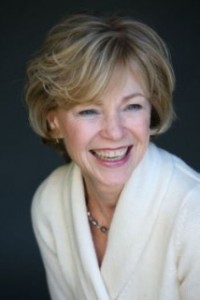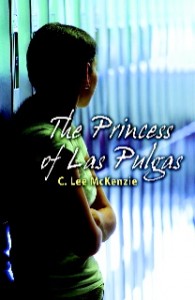Writers write for a variety of reasons: to tell a story, to explore creativity, to shine a light on an important subject. And it’s amazing what a difference it can make knowing why a certain book was written. When an author shares the backdrop–their motivation for a project–I’m more likely to take an interest in the book. That personal connection makes all the difference in my level of motivation, so I value book jackets that share something along those lines. Yes, I like to know the plot or book purpose, as well, but that still leaves me wondering what prompted the author to spend a great deal of time writing his or her book.
But sometimes authors don’t have an opportunity to share that kind of information. Marketing is often focused on the book, the end product, not the reason it came to be in the first place. So I’m pleased to introduce author C. Lee McKenzie (California) as my guest here in SunnyRoomStudio, because she shares her motivation for writing. In creating the bridge between her work and the impetus for tackling subjects, in particular, Lee offers you insight into her world perception. And, most importantly, she gives you the real reasons to be interested in her work.
UNIVERSAL CONNECTION
by
C. Lee McKenzie
Thank you so much, Daisy, for your invitation to visit your lovely sunny room. Whenever I’ve dropped in for visits over this past year, I’ve always enjoyed your thoughts about the prairie and your life philosophy. It has been such a pleasure to find a blog with a philosophy I can identify with.
While you live in one place of beauty, I live in another and, like you, I cherish every moment, never taking for granted what I’m privileged to enjoy–the redwoods and oaks, the deer, the occasional stalking mountain lion to remind me I’m the intruder, the mischievous raccoons and waddling skunks—all of these and the blue-hued mountains that live up to their name whenever the sun hovers low at their summit.
The Sierra Azul is home. It’s the place I fit. It took a long time to find, but a short time to appreciate. It’s where I found my angle of repose.
The first question you asked is one I’m asked frequently: “What started you writing?” I used to look askance and say, “I don’t know. But after having been at this for a few years, I’ve come up with more carefully considered answers—probably more answers than you need, but, now that I’m able to express them in a way that resonates, I’ll try to do just that.
First, writing is the only way I have to corral the jumble of ideas my non-Zen brain churns out. Also, it’s my way to share who I am or what I believe. Your guest, K. L. Stover, said it so well: “until creative ideas are fixed into a form that someone else can recognize, it’s not really art, because art is a vehicle of communication, a shared connection.” Another reason I write, my more selfish one, is that since writing requires so much mental and physical discipline it gives me an illusion of control over something in this world.
The oddest of my answers to your question is this one: I have to write because of characters that haunt me. They pop up inside my head yammering, wanting attention, looking for a story. I feel rather like I’m a part of a Pirandello play most of the time.
♥
♥
A couple of years ago I had two very different characters appear in my head regularly. One was a teen – mouthy, street savvy, yet vulnerable, and obnoxiously rude. The other was a disillusioned, lonely older woman. Both needed a story, and one day, while reading the newspaper, I found the seed of one that I felt might work.
The article was about young people who cut themselves. My first thought was, “Something’s wrong.” How could it be that people who haven’t yet experienced more than a few years of life need to mutilate themselves before they can feel anything? My second thought was, “How in the world do I fit these two distinctly different women, separated by more than forty years in time and attitude, into a story about a girl who cuts herself?”
It took several months to figure that out and about a year to write the story I wanted. It was my goal to show the common threads woven into my characters’ tapestries. Love, loss, mistakes and regret are not specific to any one generation, and I believed that once these women understood that, they could bridge the misunderstandings that kept them at odds—they could save each other. That was my first book, Sliding on the Edge.
The Princess of Las Pulgas
Since I’d managed to write and publish one young adult book I plunged ahead and wrote another one. And since I’m always interested in exploring cultures in contact, I wanted to consider stereotypes about people who are different from the “we,” and then out those generalizations for what they are: false.
In The Princess of Las Pulgas, I started with this: “What if a girl of privilege lost everything and had to rebuild her life?” Then I set out to find the answer by putting this girl into a foreign setting, among people with different life-styles and different ethnic backgrounds. I wanted to peel away her preconceived ideas of who these people were and gradually make my privileged heroine aware of her deeply held prejudices, prejudices she was not aware of.
You also asked me about my future books, and, as it happens, I’ve just finished a draft for another young adult book. This time my protagonist is a young boy trapped between an abusive mother and an absentee father. When he’s arrested and put into a special community program, he meets a teacher with Alzheimer’s who will change his life and hers.
So why did I choose to write in the category of young adult? Honestly, I didn’t. However, I think it chose me, instead. I hadn’t read anything in this category before I wrote Sliding on the Edge. When I did, there were few books that held my attention. Well, I’m not a teen, so that didn’t surprise me. What did surprise me was I loved some young adult books. Those that I read to the end had several qualities in common: they were well written, that is the prose was beautiful and if not exactly beautiful, appropriate, they had themes that I could identify with as an adult, and they reminded me of youthful times.
 In my books, I try for those qualities and love to develop
In my books, I try for those qualities and love to develop
themes that are close to my heart.
I like to have generations in contact. I love it when the older character as well as the teen grows during the book because I firmly believe that it’s never too late to reach your full potential. I also get excited when I can write a story in which the differences (age, ethnicity, class) between people fade and they recognize their universal connection, their humanity. I have a great fondness for poetic justice, so I’m hoping a character will arrive one day that cries out for a story about that.
Right now I’m enjoying some middle grade stories and hope to see at least a couple of those published. I always love to write in this younger category, but I can’t write picture books because that requires a special talent I don’t have.
This has become a bit of a ramble, I’m afraid, but I’ve enjoyed writing it and hope others will enjoy reading it. Thank you again for your lovely blog. I look forward to another year of sharing thoughts with you and other “kindred spirits.”
♥
Lee’s blog is called .


